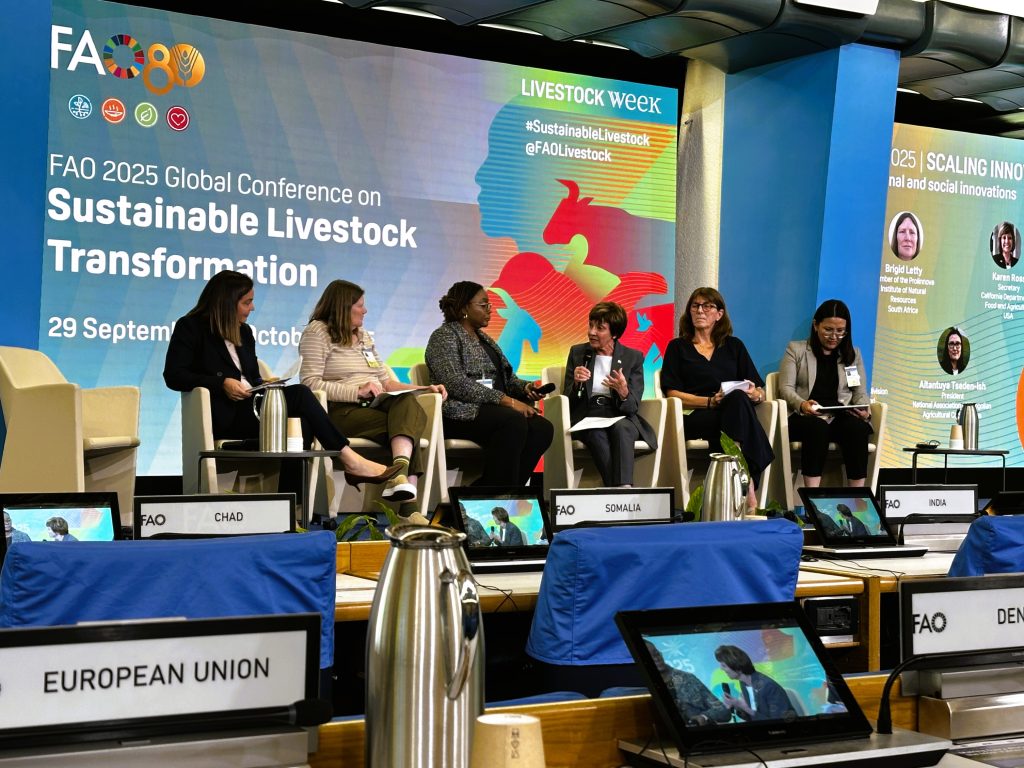CDFA Secretary Karen Ross is in Rome, Italy this week and spoke at the United Nations FAO Global Conference on Sustainable Livestock Transformation.
In her remarks, Secretary Ross emphasized California’s leadership in agricultural climate solutions, especially methane reduction, while highlighting the state’s agricultural diversity and commitment to sustainability.
California is the leading agricultural state in the United States, producing more dairy products than any other state. Dairy is California’s top agricultural commodity. This makes methane reduction especially significant, and the state’s journey in reducing methane emissions includes an investment of nearly $370 million in total leveraged funding, including for dairy digesters. A total of 142 funded digester projects—86 percent have already been built, resulting in 91% of the 27.5 million metric tons of greenhouse gas reductions from CDFA dairy and livestock program impacts. Additionally, CDFA’s Alternative Manure Management Program funds methane reduction solutions for all sizes of dairies, including, organic and smaller dairies. The state’s objective for livestock methane emission reduction is a 40 percent reduction from 2013 levels by 2030.
Secretary Ross underscored that dairy families are leaning in on sustainability—taking pride not only in what they produce, but also contributing to improved air and water quality as well as climate change solutions.
Other tools supporting this progress include:
- A Low Carbon Fuel Standard implemented by the California Air Resources Board, which has provided revenue streams for renewable fuel production from dairy digesters.
- Cap-and-Trade Program, extended this year, which continues to fund agricultural climate initiatives.
- More than $600 million total invested in transitioning agriculture toward carbon neutrality.
Beyond methane reduction, Secretary Ross highlighted California’s continued investment in farmland and rangeland conservation, working with partners like the California Rangeland Trust. These efforts protect working lands, restore ecosystems, create wildlife corridors, and encourage practices like hedgerow planting. She also pointed to the role of animal grazing in wildfire prevention, noting its importance for resilience in the face of California’s fire challenges.



